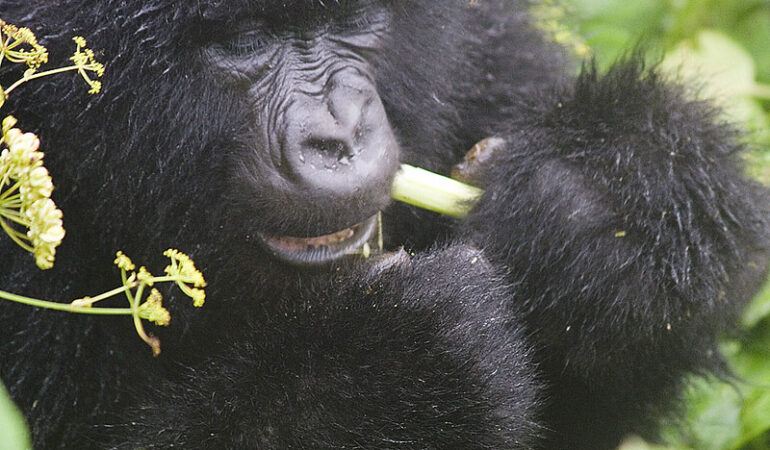
September 4, 2024
The Cultural Experience of Gorilla Trekking in Uganda.
Trekking gorillas in Uganda goes beyond just seeing the great mountain gorillas in their natural environment but is a journey into the great cultural tapestry of the country. Situated in the beautiful lands of both Bwindi Impenetrable National Park and Mgahinga Gorilla National Park, this great adventure provides a traveler with a chance to tour the marvelous wildlife and, at the same time, the rich culture of the surrounding communities who live alongside these incredible creatures.
From participating in local customs to learning about conservation, the cultural experience of gorilla trekking in Uganda adds an extraordinary depth and meaning to this already remarkable experience of viewing wildlife.
Community Engagement
The fact that one gets to engage with the local communities living around the national parks is among the most rewarding elements of gorilla trekking in Uganda. These are communities such as the Batwa, Bakiga, and Bafumbira that coexisted with the gorillas for centuries and are deeply founded in traditions and knowledge about the forests.
Most of the trekking tours are organized to culturally visit nearby villages, enabling the travelers to learn about daily life, customs, and histories of these people. They are among the oldest inhabitants in the region; Batwa people have been referred to as the “keepers of the forest.”.
With such visits, one gets to join in on traditional dance performances, listen to sessions of storytelling, and even cook some local dishes. These activities offer insight into life from those who have coexisted peacefully both with the gorillas and the forests for generations.
Interacting with the locals not only complements the experience of trekking but goes a long way toward ensuring the sustainability of communities, since most tours boost the local artisans and businesses.
The Cultural Experience of Understanding Conservation Efforts During gorilla trekking, it’s also a question of understanding the immense work laid down in the way of conservation for the protection of mountain gorillas and their habitats.

The organizations and local communities work day and night to ensure the continuity of these endangered species, while permits to trek usually go directly toward funding various conservation projects and local development initiatives.
These challenges offer visitors a chance to learn about the problems of conservation, poaching, habitat destruction, and human-wildlife conflict, and involvement and education within the community regarding such problems.
Knowledgeable rangers and guides take the trekkers through all the daily efforts that go into the monitoring and protection of the gorillas.
Their involvement in these processes with the local communities is quite important, as they are key players in securing both the forest and its inhabitants.
This turns travelers who go gorilla trekking into part of a bigger conservation story that involves supporting both wildlife and people beyond the thrill of the viewing experience of these magnificent animals.
The Batwa Experience: A Snip into Ancient Life in the Forests
It includes the real cultural experience on the shores of Bwindi Impenetrable National Park, where one is taken aback into an epic about ancient forest life of the Batwa pygmy.
Traditionally, the Batwa have been hunter-gatherers living in the forest. With the establishment of the national parks, they were relocated out of the forest, and the Batwa Experience was set up to preserve their heritage and to share.
Here, visitors are taken through the forest with the elders of Batwa, showing how people used to hunt in the past, what herbs were used to cure certain sicknesses, and how people made fire.
In songs, dances, and oral history, the Batwa communicate a deep connection to the forest and knowledge of the intricate ecosystems therein. The importance of this forest to the Batwa is such that any such experience can only be in the interest of showing just how much natural and cultural heritage needs to be preserved.
Supporting Sustainable Tourism
Probably the best example of how sustainable tourism can directly benefit both wildlife and local communities is gorilla trekking in Uganda.
Through treks with operators whose responsible tourism principles are up to scratch, travelers can contribute to community development, environmental conservation, and cultural preservation.
Indeed, several of the trekking companies involve local people through jobs, education, and healthcare to better distribute the benefits deriving from tourism.
Besides, gorilla tracking has this cultural element that instills an aspect of mutual respect between visitor and local. It allows travelers to appreciate the customs and challenges faced by residents for this delicate balance between human and nature.
This dialogue of knowledge and experiences deepened the meaning of the trekking journey and made it other than a wildlife adventure, but actually a cultural exchange in itself.
Gorilla trekking is such a strong cultural experience in Uganda, serving to remind one of how people, wildlife, and the environment all are connected.
In this regard, joining into the local culture and promoting sustainable tourism practices means that you become part of an even larger effort toward protection for these amazing creatures and communities of the forest as home.
Setting aside the intoxicating encounter with the mountain gorillas themselves, some of the deeper cultural understandings, conservation perspectives, and shared experiences make gorilla trekking an absolutely life-changing experience in Uganda.



